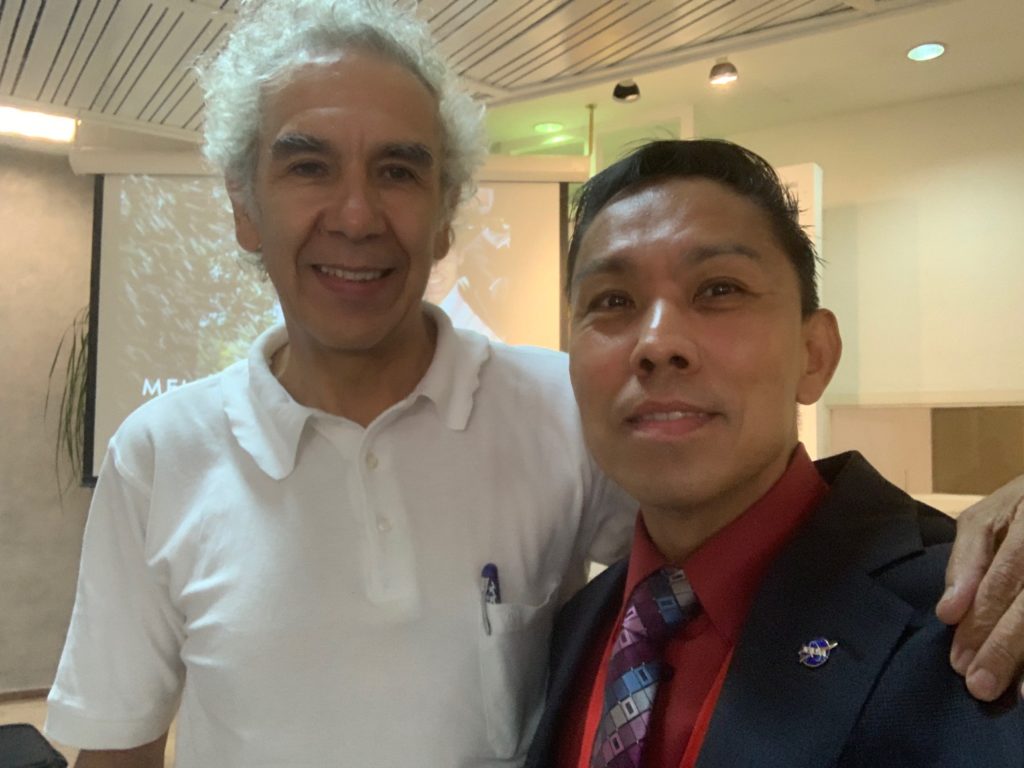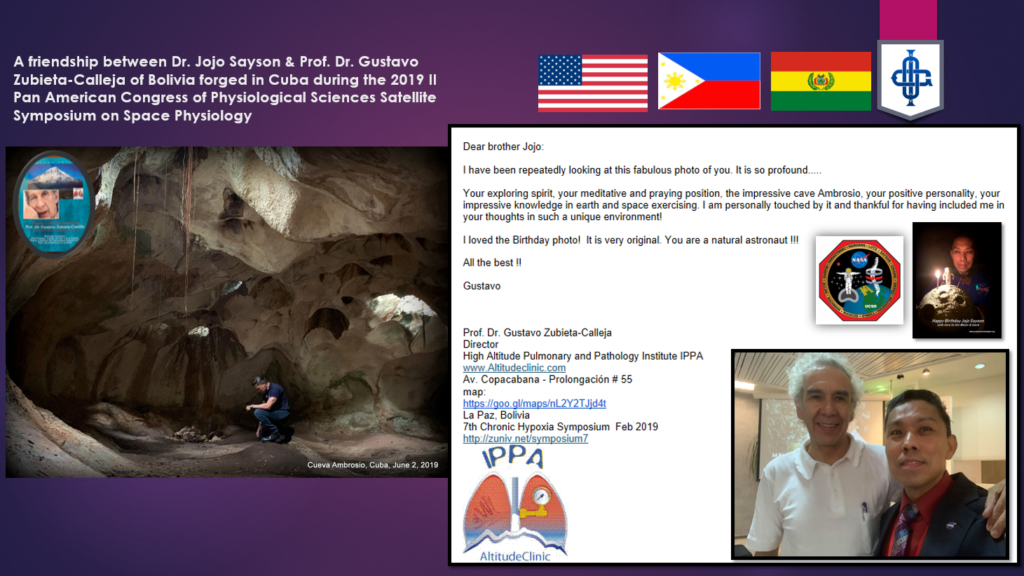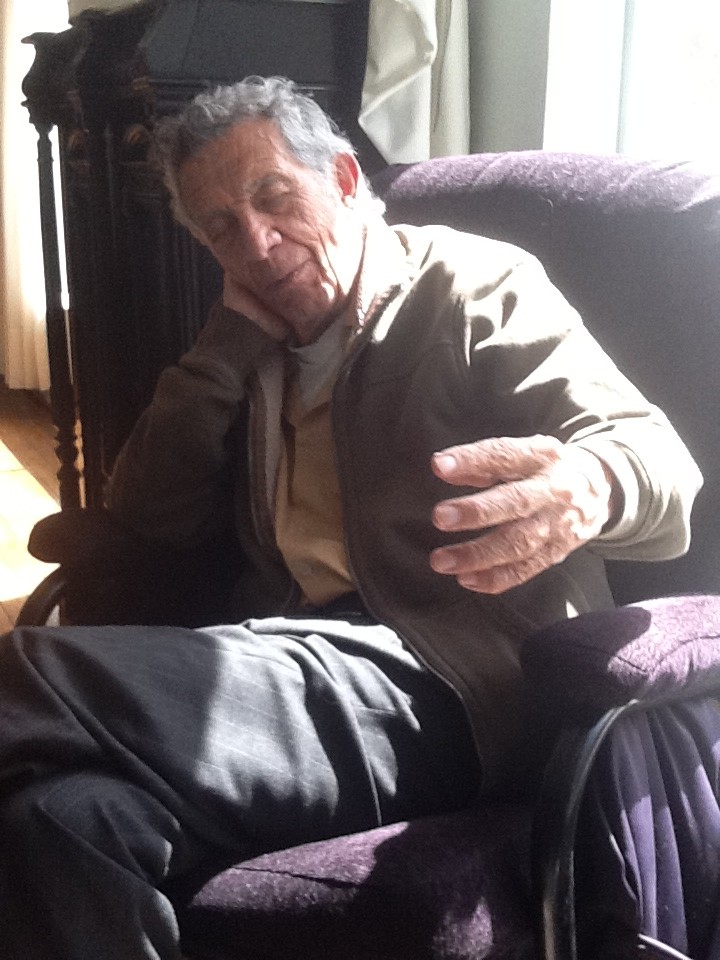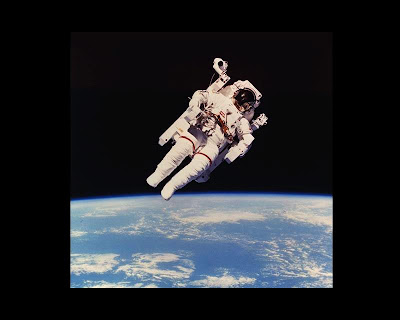
What is BioSpaceForming ?
BioSpaceForming is the adaptation of all living beings on earth to outer space. Humankind with the highest intelligence, evolving into the future beyond earth.
Bio = life Space = Universe Forming = Adaptation
Humans cannot expect to go to high altitude cities and continue to be sea-level residents. The same concept applies to space travel. Adaptation is a fundamental process in order to secure the survival of the species. One of the transcendental mechanisms of adaptation to high altitude is the increase of red blood cells. This is the biological response to chronic hypoxia that allows for the most efficient and less energy-consuming mechanism of oxygen transport to the tissues. One of the key issues is that Chronic Hypoxia becomes a fundamental tool. it gives humans and other species an advantage of survival, on earth, and even beyond earth.
This is explained with the Adaptation to High Altitude Formula that we created. Additionally and actually paradoxically, there is more tolerance to hypoxia, the higher one goes in altitude. On the summit of Mt. Everest at 8842m, humans are 6 fold more tolerant to hypoxia than at sea level. These fundamental observations show us that as we go high in a mountain we are actually reducing the barometric pressure and we are getting closer to space, where the pressure is 0.
Look for our Facebook Biospaceforming site for more details.
Space travel in chronic hypoxia
Reducing the pressure of spaceships is extremely important because it will signify a reduction of the wall strengthening materials and hence lighter spaceships. This not only reduces the weight for lift off, but it has biological advantages. Exposure to life under chronic hypoxia makes humans stronger, following a basic rule: what does not kill you, makes you stronger. This is proved by extended longevity at high altitude.
Furthermore and most importantly, the EVA suits can become more flexible with extended autonomy and this applies even those space suits used on Mars. Why? Because since the astronauts would be permanently adapted to life at high altitude, they would use less oxygen pressure.
Furthermore space travel with actual technology requires a lot of time. Our biological clocks are too short. This implies that in order to travel to relatively close planets, it will be a one-way flight. No round trip. Hence why try to remain with the optimal body for earth habitation?. Why use so much oxygen pressure? Why expect to live surrounded by an atmosphere with a sea level barometric pressure? Why expect the future habitable planets to be like earth? Humans have to understand that it is not only the planets that have to be Terraformed; hypothetical process of deliberately modifying the atmosphere, temperature, surface topography or ecology of a planet, moon, or other body to be similar to the environment of Earth to make it habitable by Earth-like life. Mars is the first planet that is being proposed to be terraformed. It is us the biological beings that have to change and adapt to other worlds i.e. BioSpaceForming, and continue life and intelligence in totally different conditions. The first paper where BioSpaceForming was originally described (for the first time in history Dec, 2018) can be read here:
https://zuniv.net/pub/BioSpaceForming.pdf This was published in the BLDE Journal in India., thanks to Prof. Kusal Das.
Actually, the first mention of Space travel in a Chronic Hypoxia Environment was written in a Dissertation entitled “Adaptation to High Altitude and to Sea Level: Acid-Base Equilibrium, Ventilation and Circulation in Chronic Hypoxia” at the Univ of Copenhagen, back in 2007. It was then presented in the III Chronic Hypoxia Symposium entitled: THE HIGH ALTITUDE AND LOW ALTITUDE ADAPTATION STUDIES AND THEIR PRACTICAL APPLICATION TO TRAVEL IN HUMAN EXPLORATION OF SPACE
Gustavo Zubieta-Calleja (Jr), Natalia Zubieta-DeUrioste & Gustavo Zubieta-Castillo (Sr).
High Altitude Pulmonary and Pathology Institute (IPPA)
Zubieta University
La Paz, Bolivia
And in subsequent Chronic Hypoxia Symposiums, the last one (as of this date, Sept 2019) 7th Chronic Hypoxia Symposium. But I was also invited to a Space Physiology Symposium in Varadero Cuba during the Panam2019 Physiology conference, by Alan Hargens.
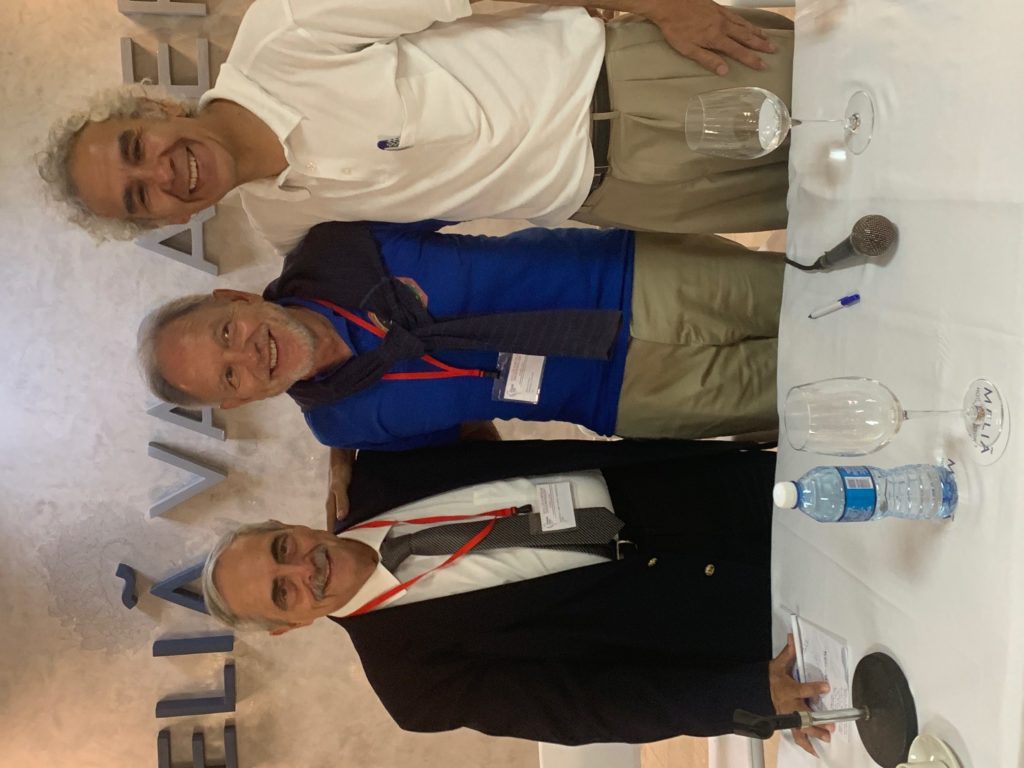

The full conference on Space Travel in a Chronic Hypoxia Environment can be seen here.
Here is the second publication at the Revista Cubana de Investigaciones BioMedicas. in Sept 2019.

